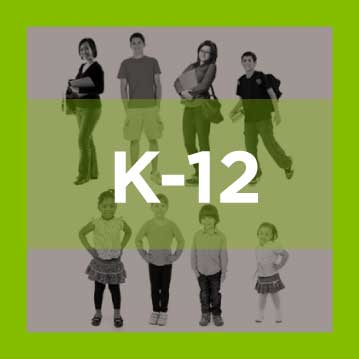At Education Commission of the States, we actively track legislation addressing local school district operations and structures. One of the more challenging issues in this area is district consolidation and deconsolidation. In recent years, state policy has sought to provide incentives and mandated processes – particularly for rural districts – for district consolidation. During the 2017 legislative session, a noteworthy bill in Nevada moved in the opposite direction: it sought to deconsolidate Clark County School District (CCSD), the fifth-largest school district in the country.
The reorganization of CCSD represents the culmination of decades of debate, and a substantial amount of work ahead. This blog post will discuss district deconsolidation and its challenges, some background on CCSD and a summary of the legislation. We conclude with some pressing questions on district reorganization to help guide future discussions.
What is school district deconsolidation? What challenges does it present?
School district deconsolidation is the practice of breaking up a school district. There are several types of deconsolidation:
- A large school district broken into separate smaller districts.
- The creation of autonomous or semi-autonomous units within the district.
- Regional service areas created with all powers and duties still controlled at the district level.
School district deconsolidation presents enormous challenges for policymakers. Districts must articulate how administrative structures will perform functions depending on the type of deconsolidation. Additionally, district officials must address equity issues that arise in the context of large urban districts including equitable access to quality education and facilities.
Clark County School District (CCSD): Background
CCSD serves over 315,000 students in southern Nevada, including the Las Vegas metropolitan area, and accounts for approximately 70 percent of the state’s public-school enrollment. CCSD operates a total of 351 schools and employs over 41,000 people.
According to a 1997 report, debate on this issue began during Nevada’s 1977 legislative session. The most recent push for deconsolidation was Assembly Bill 369 of the 2015 session, which created a technical advisory committee to develop a plan and provide recommendations to reorganize CCSD. The committee finished its report in 2016, and the recommendations for reorganization were adopted into law as Assembly Bill 469 during the 2017 legislative session.
Nevada Assembly Bill 469
Assembly Bill 469 requires CCSD to begin reorganizing its district structure. Once completed, the district’s new organization will consist of semi-autonomous schools within the district while maintaining the central district governance structure. The core provisions of the reorganization are:
- Every school within CCSD is designated as a “local school precinct” that operates with site-based decision-making authority.
- Local school precincts have procurement and budgetary authority and are responsible for negotiating salaries, benefits and other conditions for employees.
- After deconsolidation, local school precincts receive 80 percent of their funding the first school year, and 85 percent every following year, from the central school district.
- The district superintendent hires associate superintendents to oversee local school precincts and creates organizational teams for each local school precinct.
- Principals must create organizational teams for each school that include teachers, school employees and parents.
- School organizational teams develop and propose school plans of operation, an itemized budget and an academic achievement plan.
Conclusion
Some considerations to keep in mind when debating district deconsolidation include:
- Identify who is best able to make these decisions – the state, counties, local school boards, etc. There are different benefits and challenges to whomever authority is given.
- Deconsolidation should not be viewed as a solution to a short-term problem. Deciding to move forward can take years and the full completion of deconsolidation may take several more.







